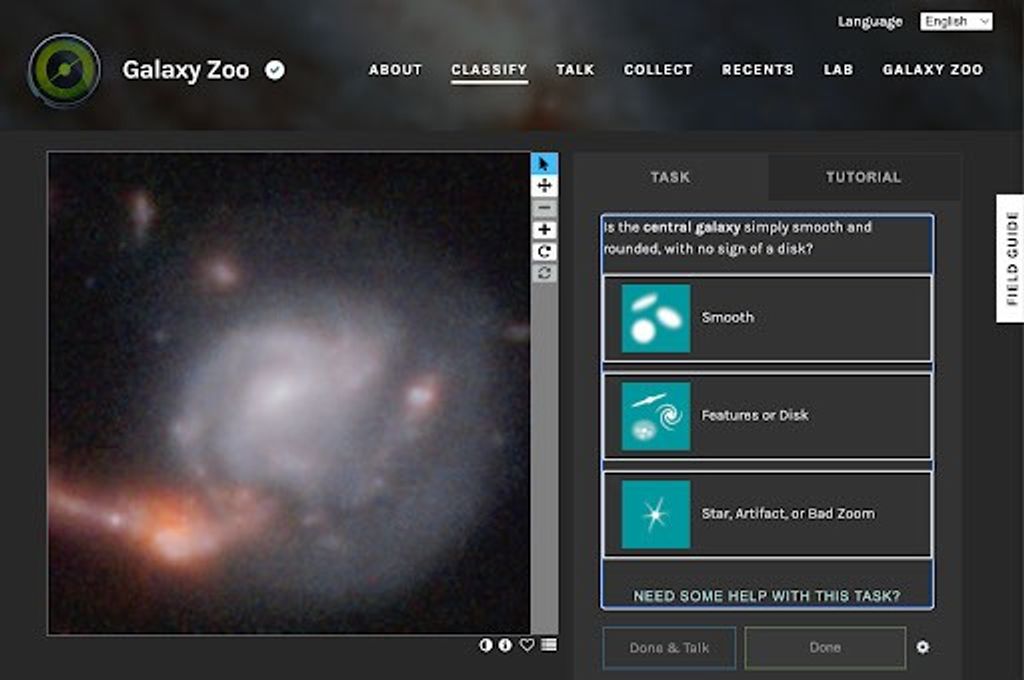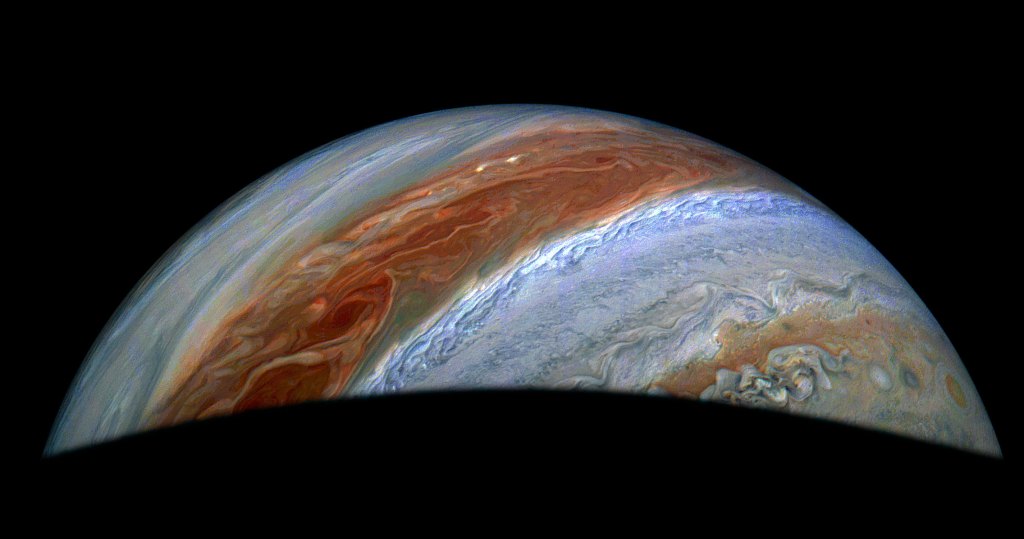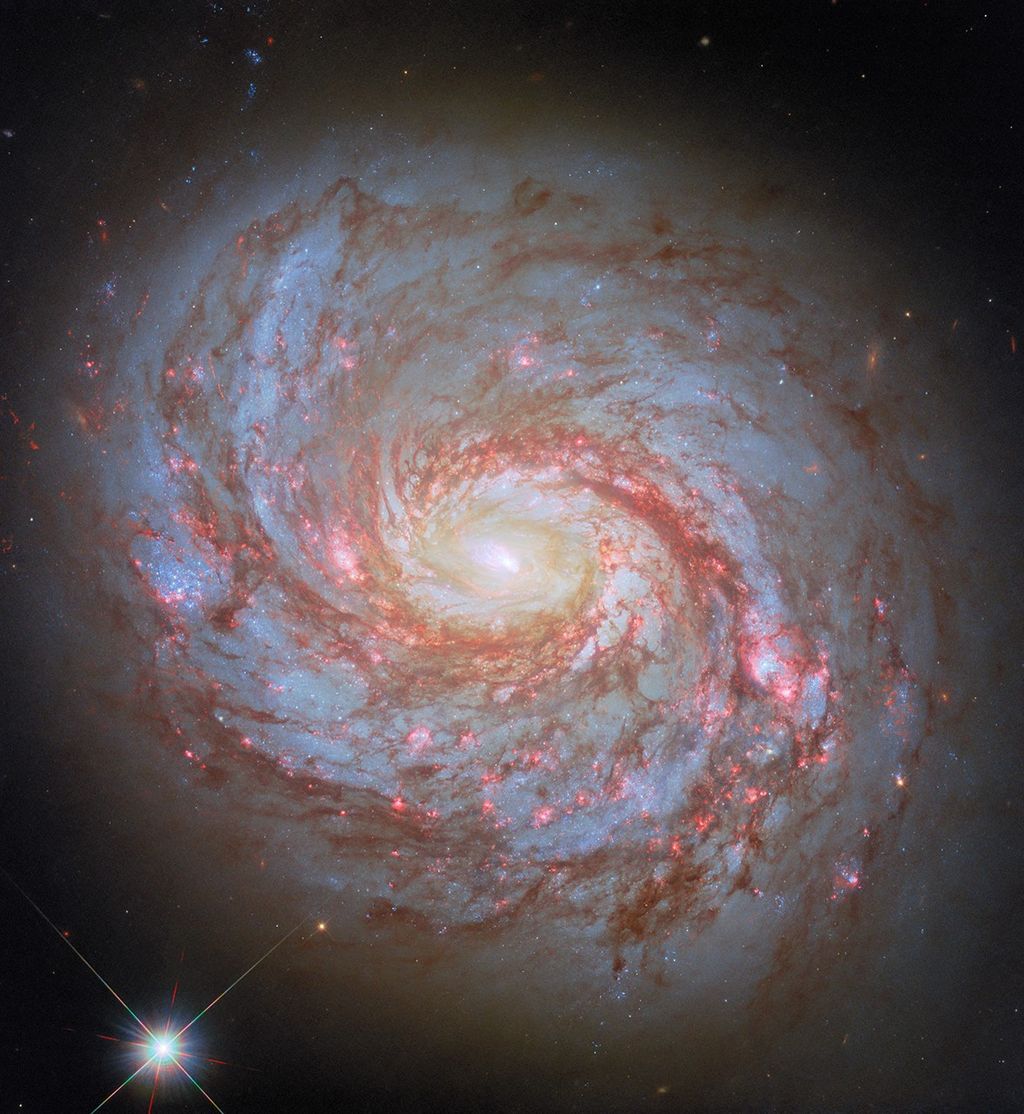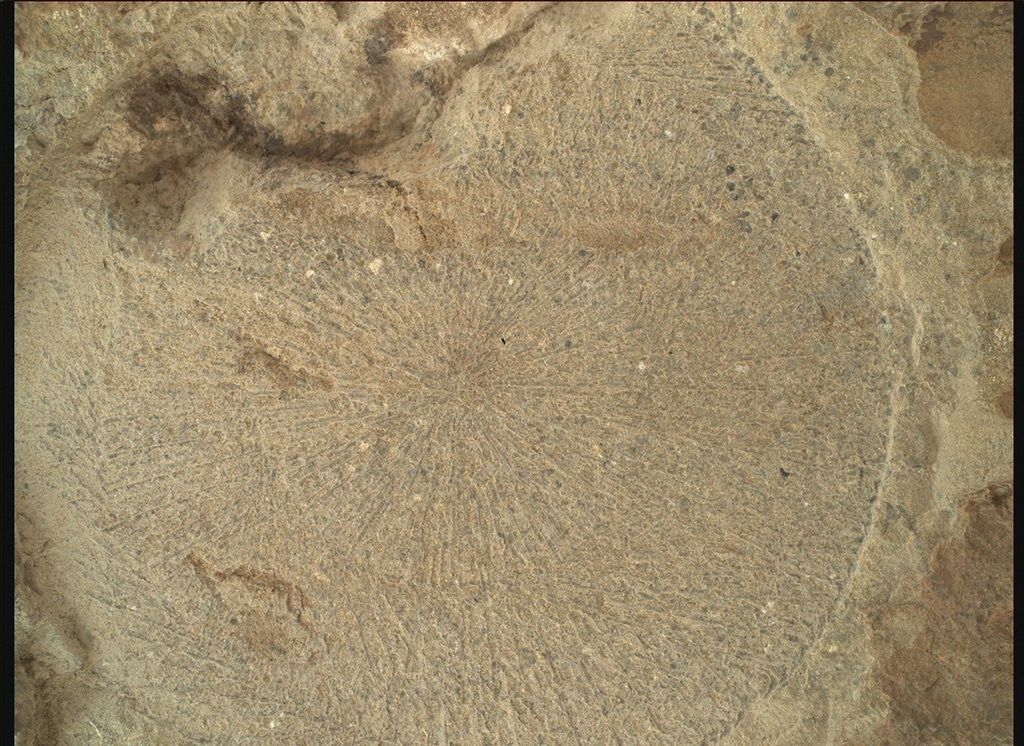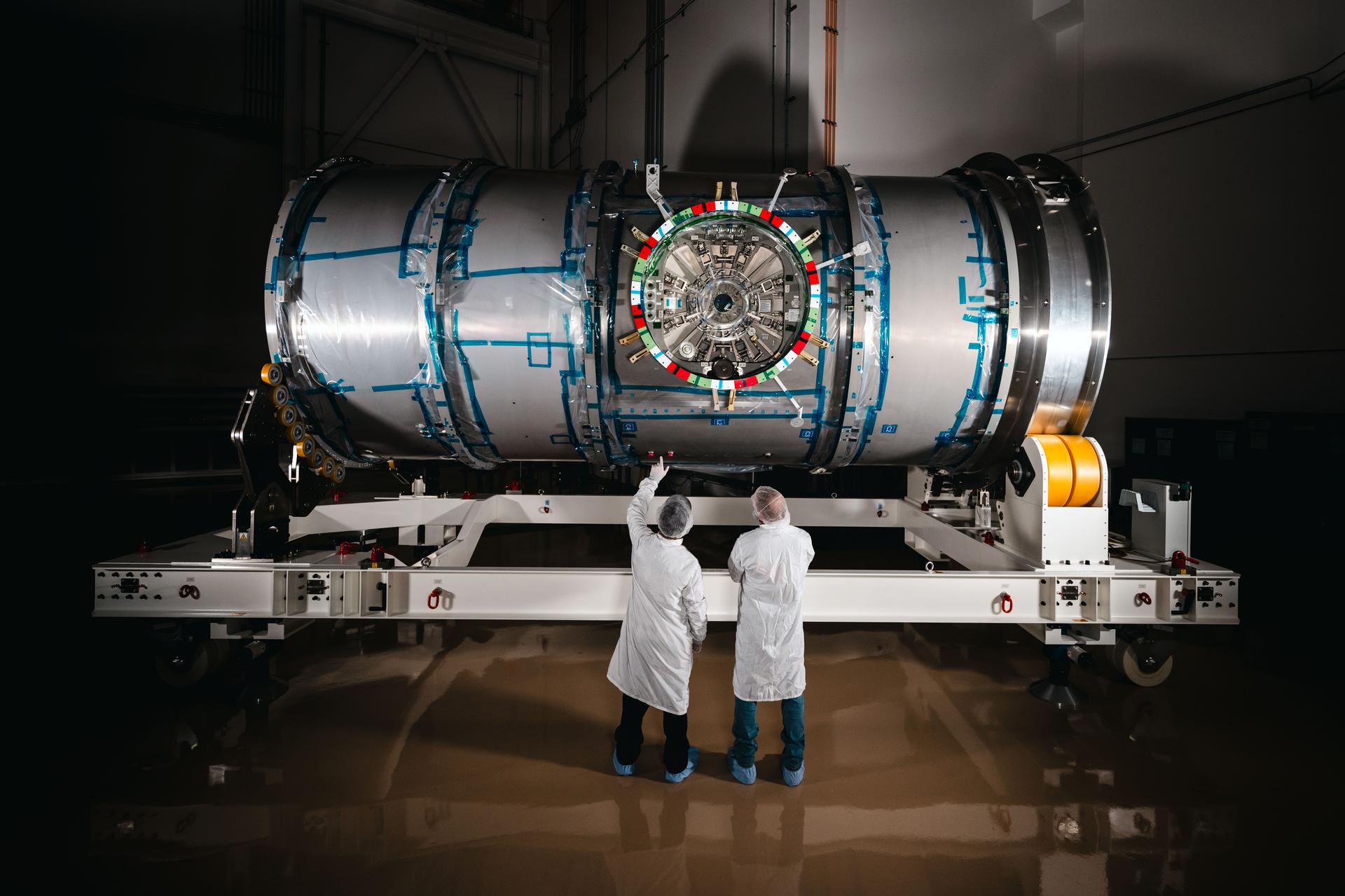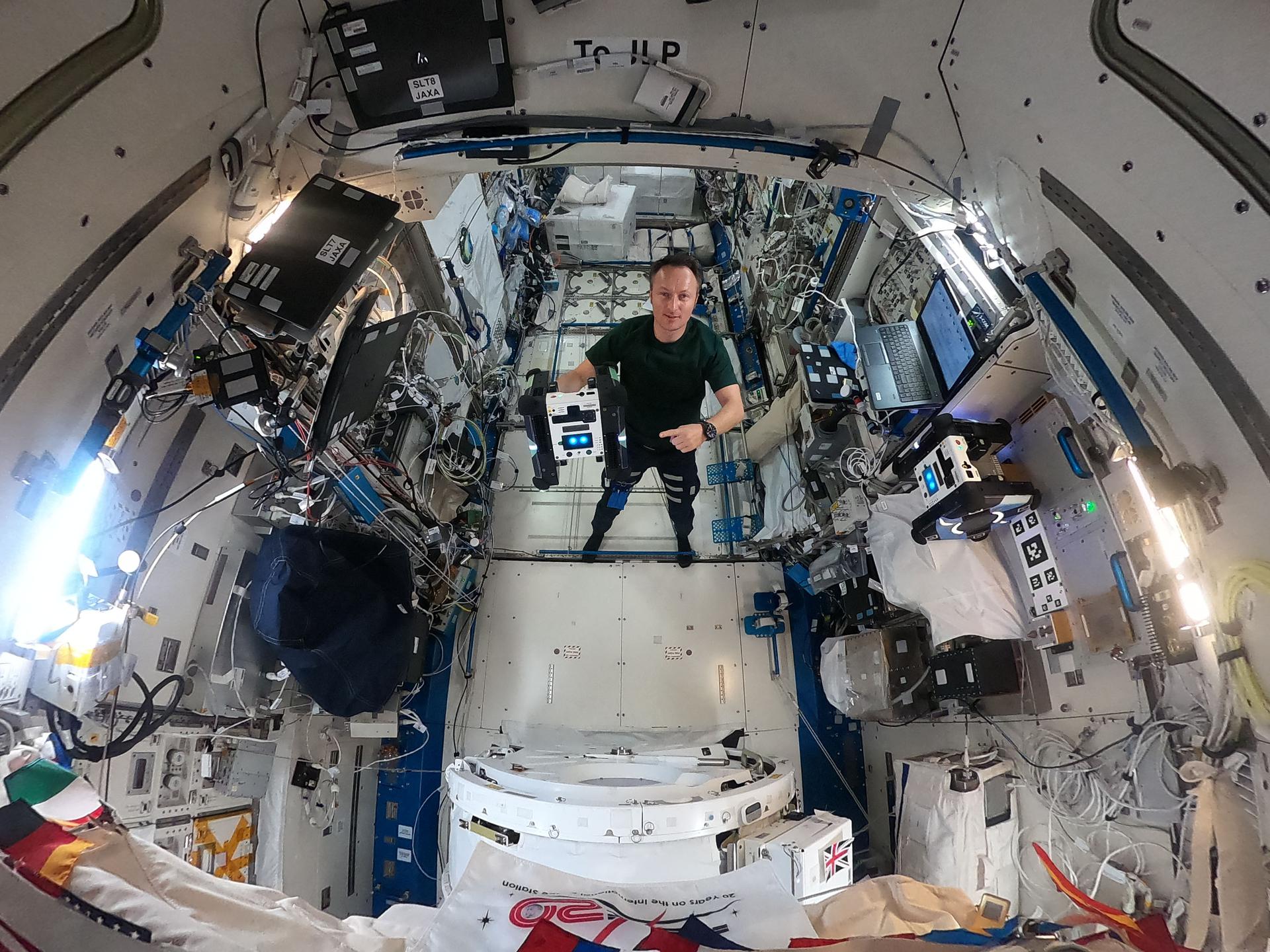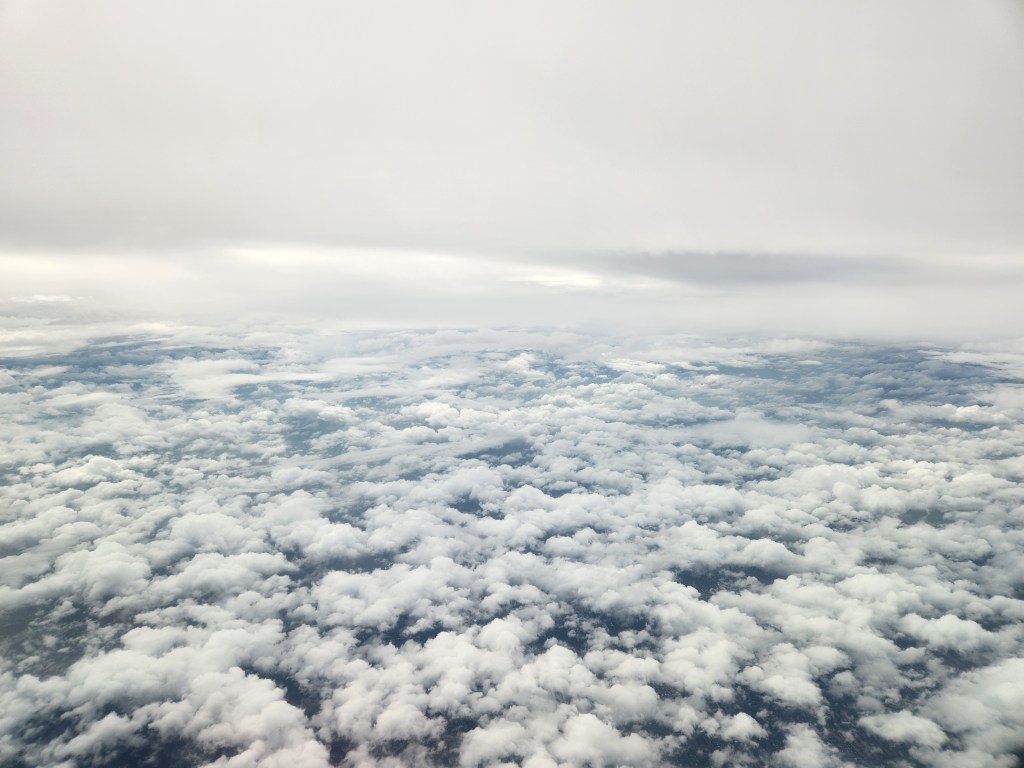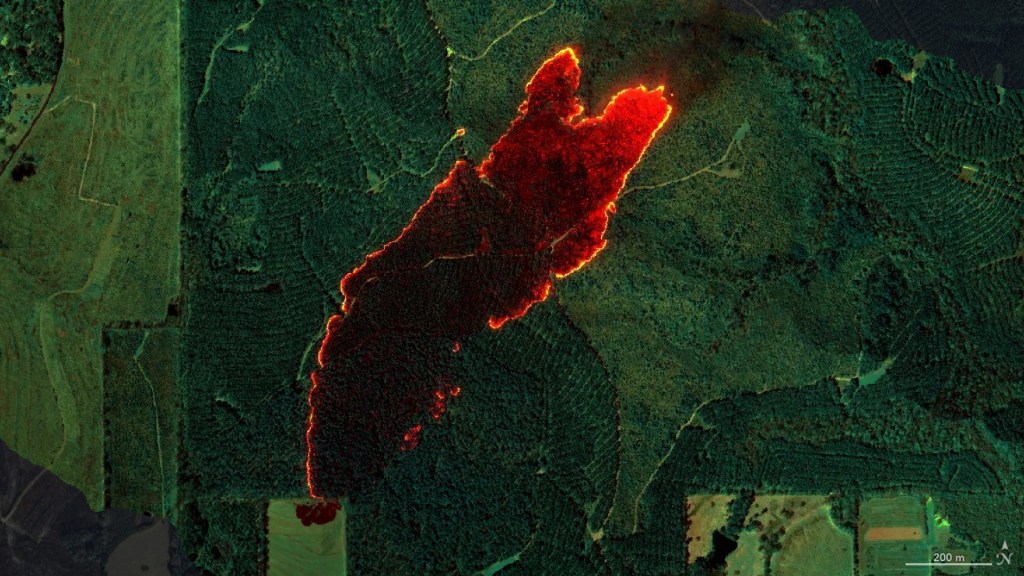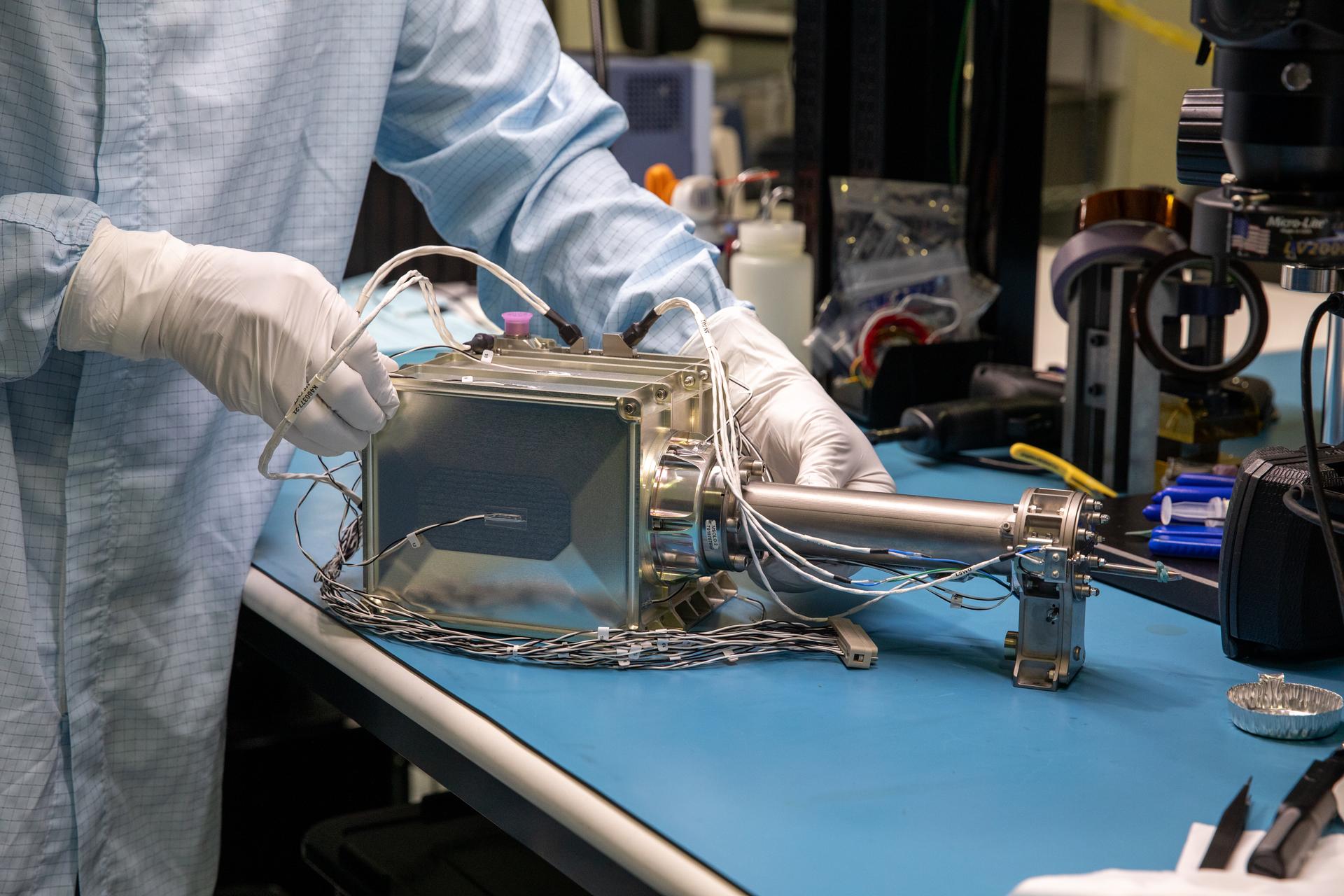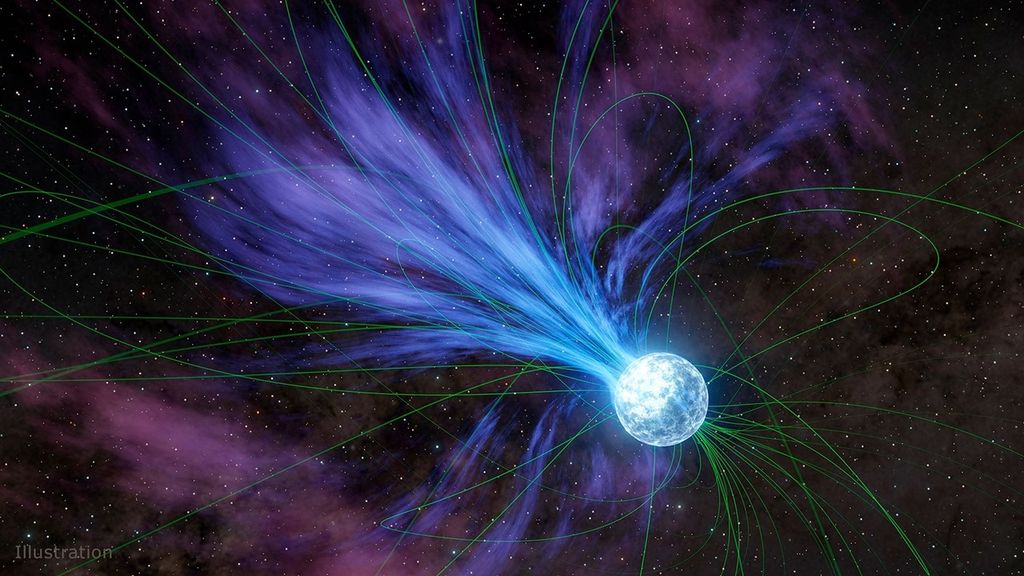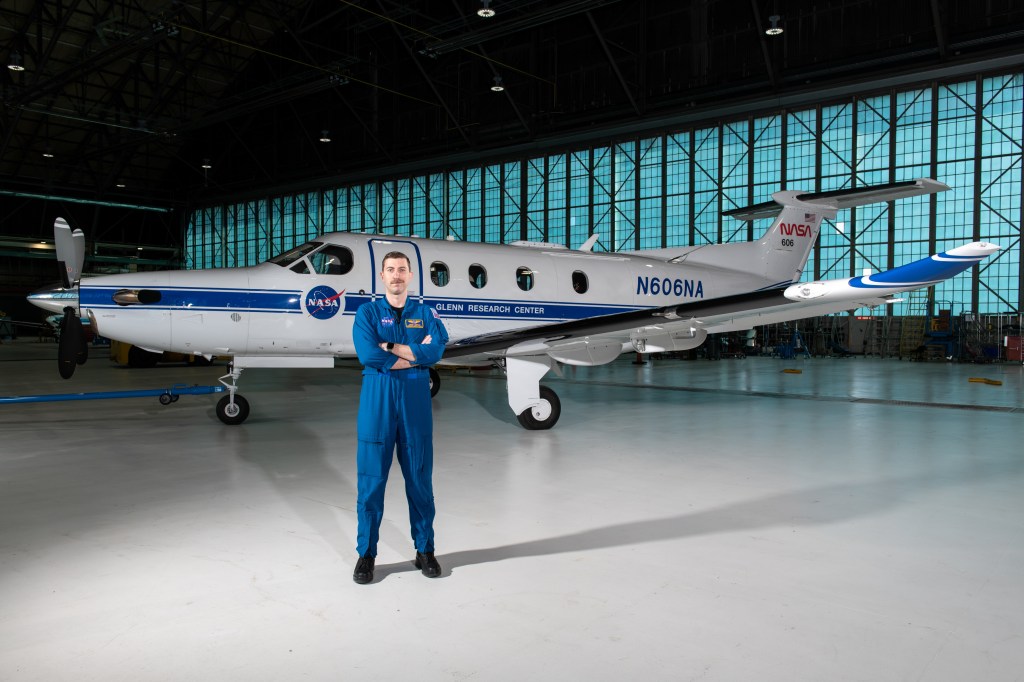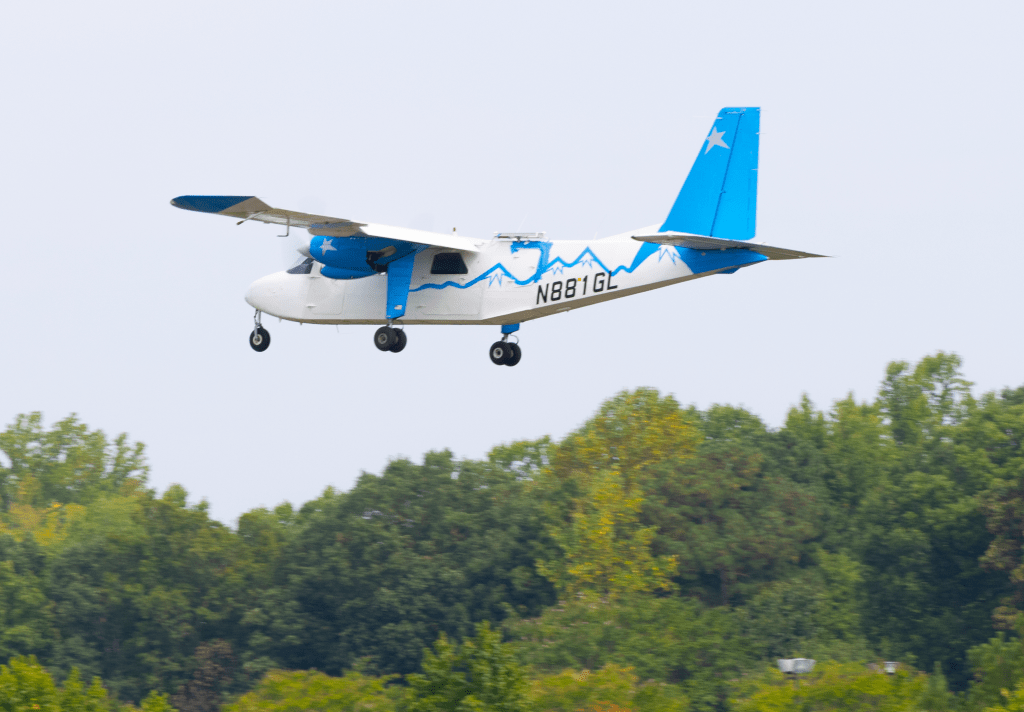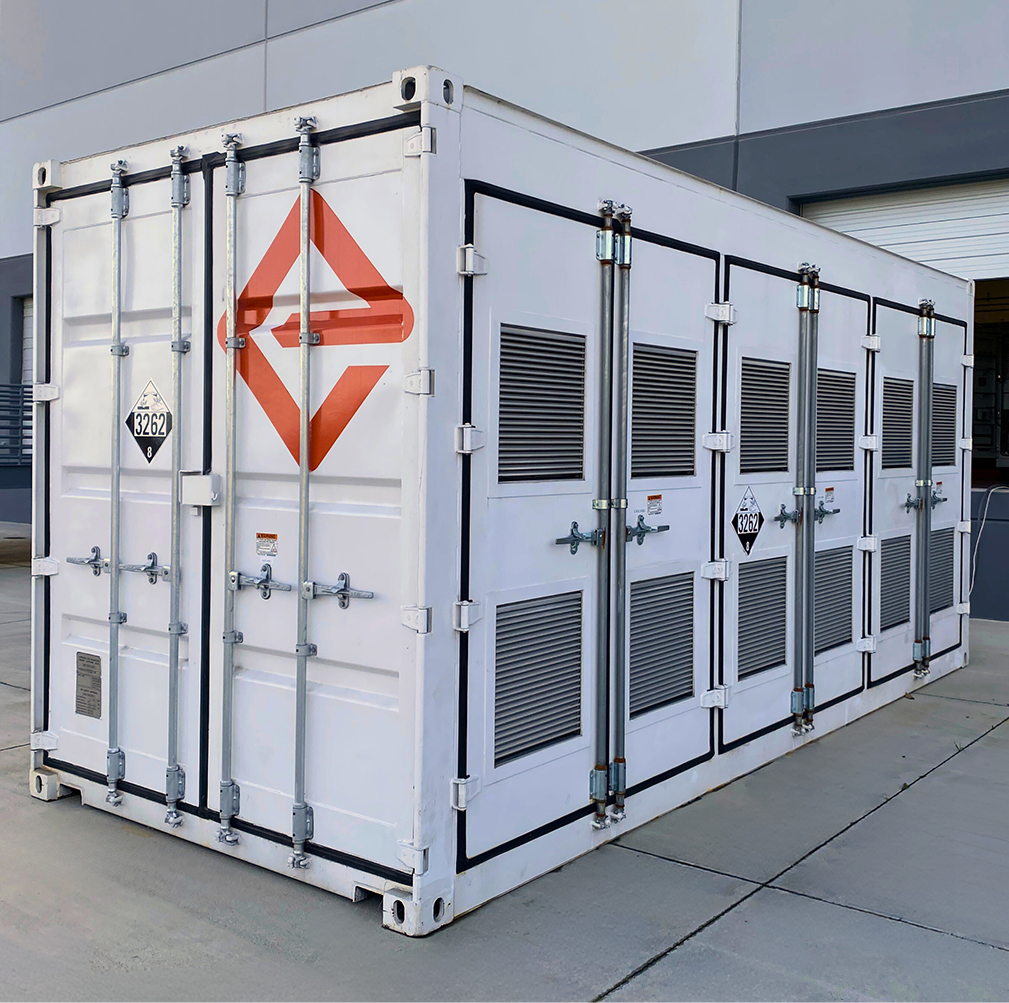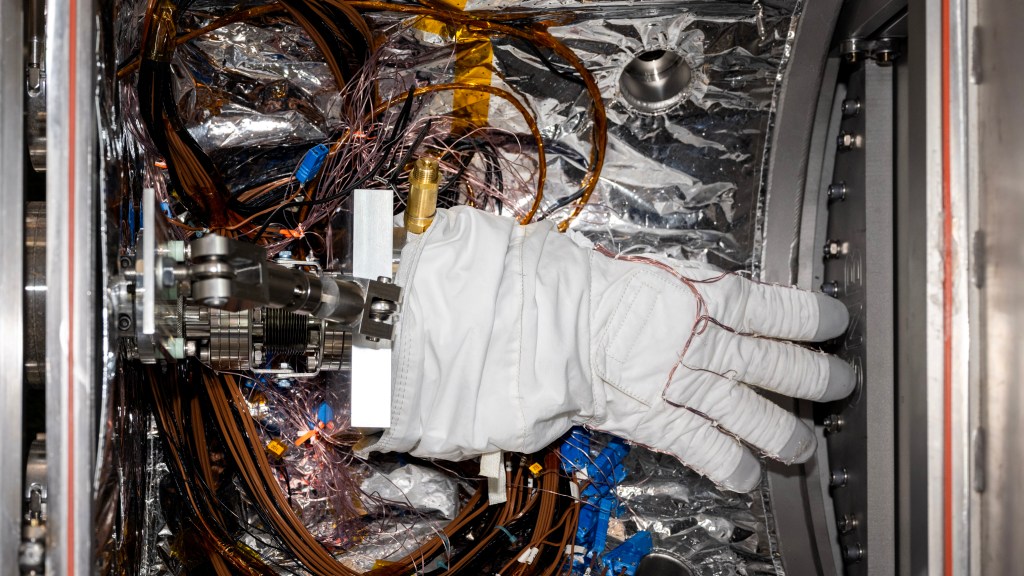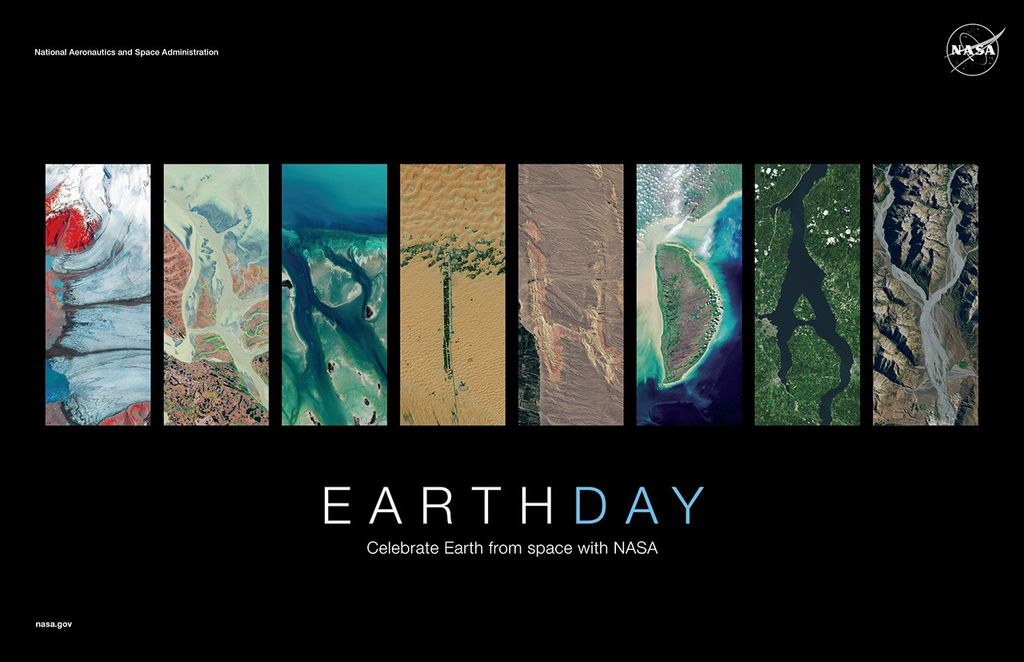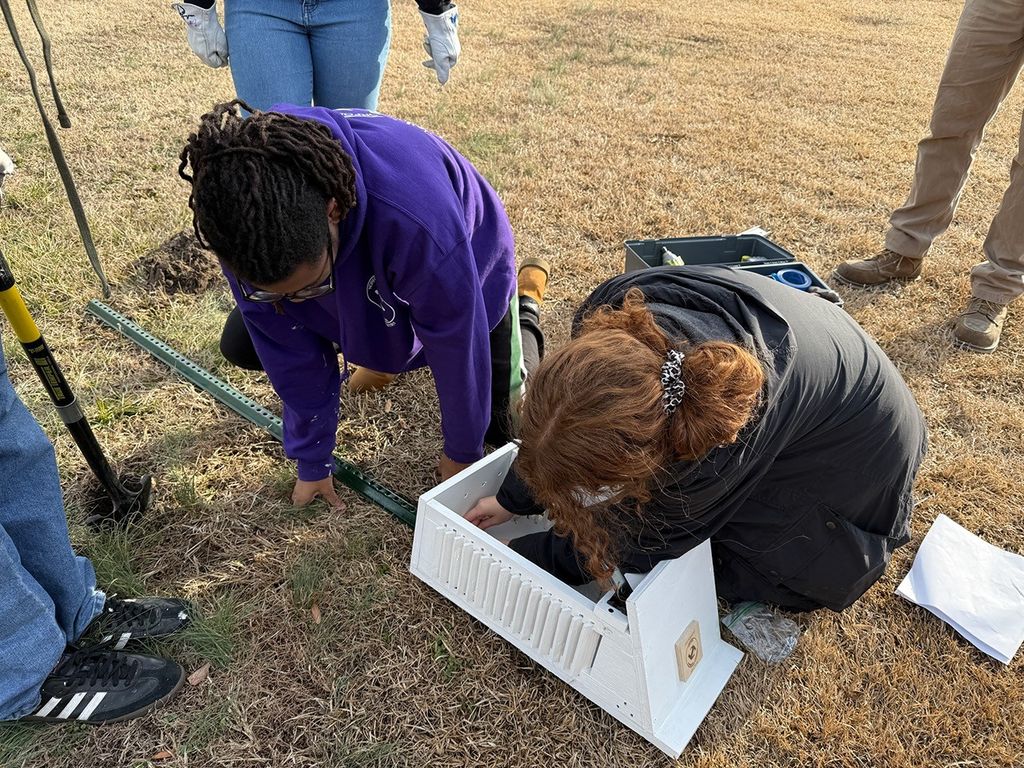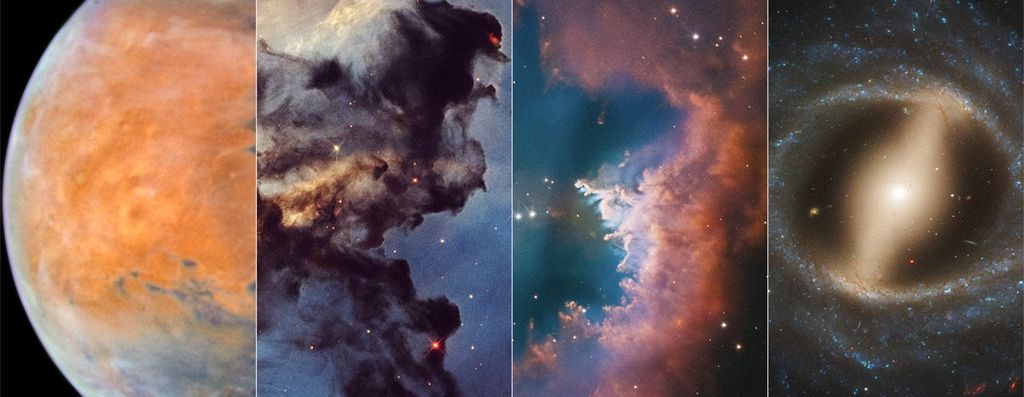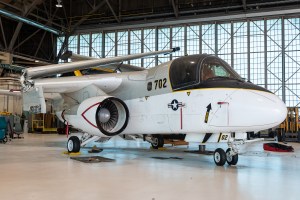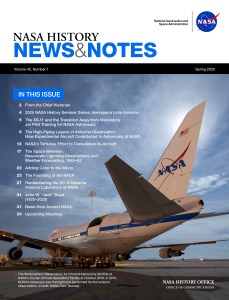On Aug. 30, 1963, to assist in selecting landing sites for Apollo Moon missions, NASA approved a new program of spacecraft to photograph selected targets on the Moon. The Lunar Orbiter program, managed by NASA’s Langley Research Center in Hampton, Virginia, called for five spacecraft to enter lunar orbit and image these potential landing sites at medium and high resolution. The Lunar Orbiter imagery, in conjunction with the Surveyor series of soft landers, prepared the way for the first human landing on the Moon, as called for in President John F. Kennedy’s challenge to the nation. Five Lunar Orbiters flew within one year in 1966 and 1967, returned detailed images of proposed Apollo landing sites, and mapped 99% of the Moon’s surface, including the far side.
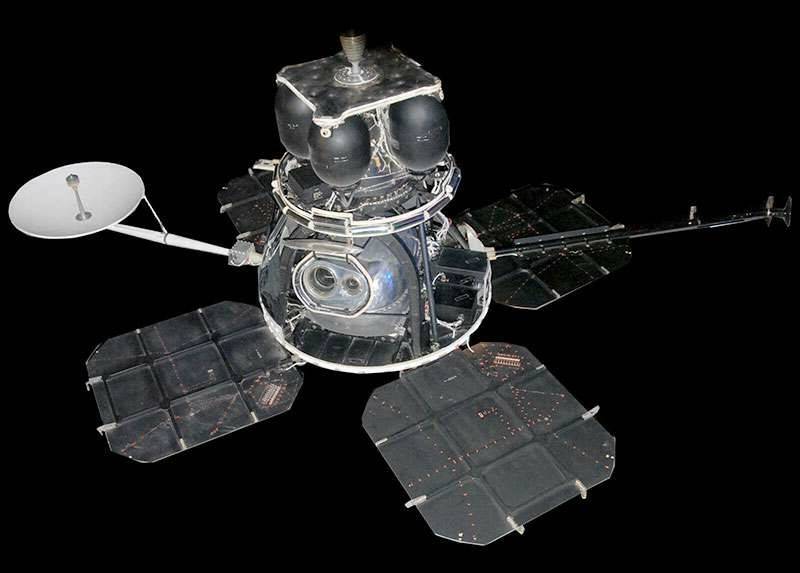
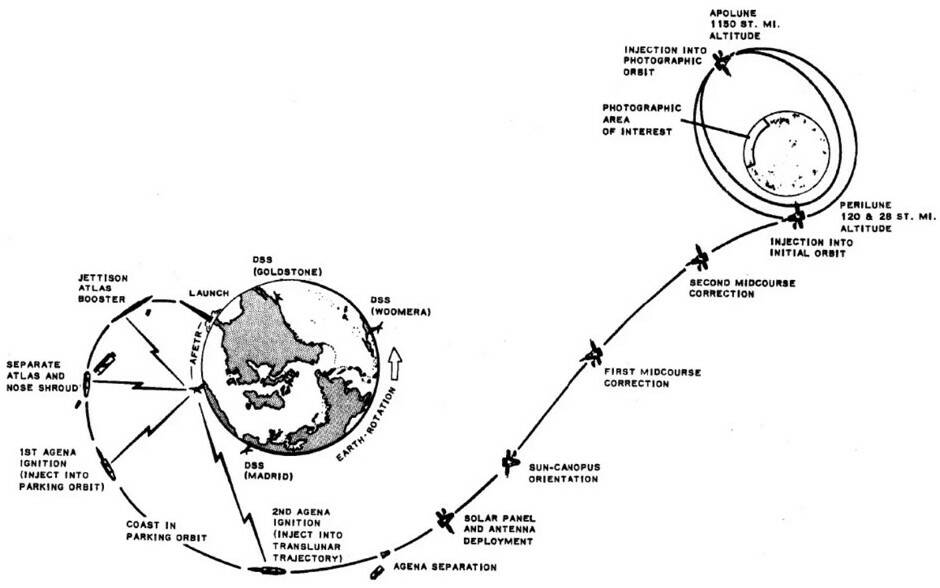
Left: A Lunar Orbiter spacecraft, with the two-camera imaging system seen at center. Right: The trajectory of the Lunar Orbiter spacecraft.
On Aug. 30, 1963, NASA Associate Administrator Robert C. Seamans approved a new program called Lunar Orbiter, five spacecraft to photograph selected targets on the Moon down to one-meter resolution to aid in selecting sites for Apollo landings. From the five submitted proposals, the agency selected The Boeing Company of Seattle on Dec. 20 to build the spacecraft, awarding the contract on May 7, 1964, Boeing’s first major NASA contract. Each three-axis stabilized Lunar Orbiter spacecraft weighed 850 pounds, including the 145-pound imaging system. Four solar panels provided 375 watts of power to the spacecraft’s systems and cameras, with a 36-inch diameter dish antenna for communications and downlinking the images. A single engine provided thrust for mid-course maneuvers and for lunar orbit insertion. The Lunar Orbiters launched from the Cape Kennedy Air Force Station, now the Cape Canaveral Space Force Station, in Florida atop an Atlas-Agena D rocket to achieve an initial parking orbit around the Earth, with the Agena firing a second time to send the spacecraft on a translunar trajectory lasting about 92 hours. The Lunar Orbiter then fired its main engine to achieve an initial elliptical orbit around the Moon that it later adjusted for the mapping orbit and for any extended mission objectives. NASA’s Jet Propulsion Laboratory in Southern California made their Deep Space Network available for tracking the spacecraft in lunar orbit and for receipt of the photographic data. That experience, especially with more than one Lunar Orbiter operating at the same time, proved valuable for the Apollo program, beginning with the first crewed lunar orbit mission of Apollo 8.
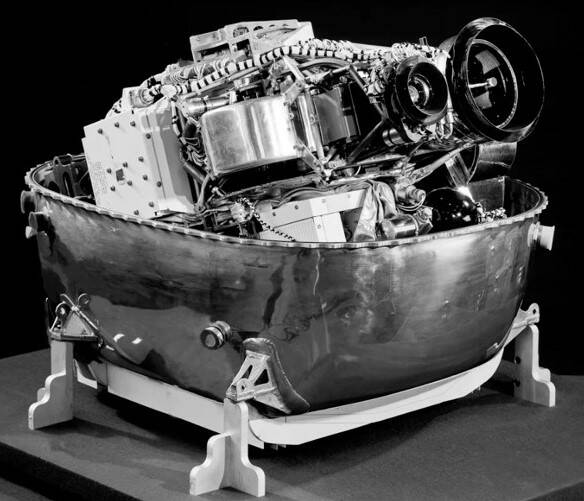
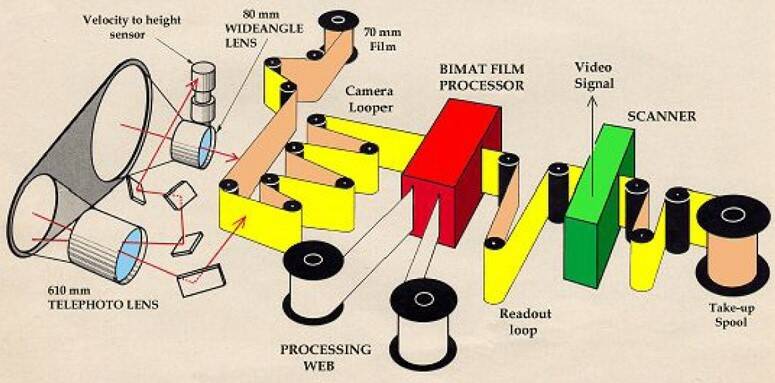
Left: The Lunar Orbiter imaging system including two cameras and the film developing, scanning, and transmission systems. Right: A schematic showing the details of the Lunar Orbiter imaging system.
The Eastman-Kodak Corporation of Rochester, New York, provided the imaging system, based on one designed for a classified military satellite. The system used film exposed and developed aboard the spacecraft, achieving higher resolution than television systems of the day. The apparatus consisted of a 610 mm focal length narrow-angle and an 80 mm focal length wide-angle camera to achieve a best resolution of three and 25 feet, respectively. The two lenses simultaneously exposed a high-resolution and a medium-resolution image on the same film. The system developed the exposed film on board the spacecraft and scanned it for transmission back to Earth where engineers converted the signals into photographs. The high-resolution imaging system used a motion compensation system to avoid blurring of photographs caused by the spacecraft’s velocity, especially during low altitude imaging passes. Once they met their primary imaging objectives, each of the Lunar Orbiters remained in orbit to collect data on the radiation and micrometeoroid environment near the Moon, and especially to identify mass concentrations, or mascons, in the Moon’s interior that perturb a spacecraft’s orbit. Ground controllers needed a good understanding of the mascons’ effects for navigation not only of the Lunar Orbiters but of later Apollo missions that required precision rendezvous and docking. The first three Lunar Orbiters primarily focused on imaging potential Apollo sites at the highest possible resolution, with the last two focused on imaging areas of scientific intertest and mapping both the nearside and the poorly imaged far side in as much detail as possible.

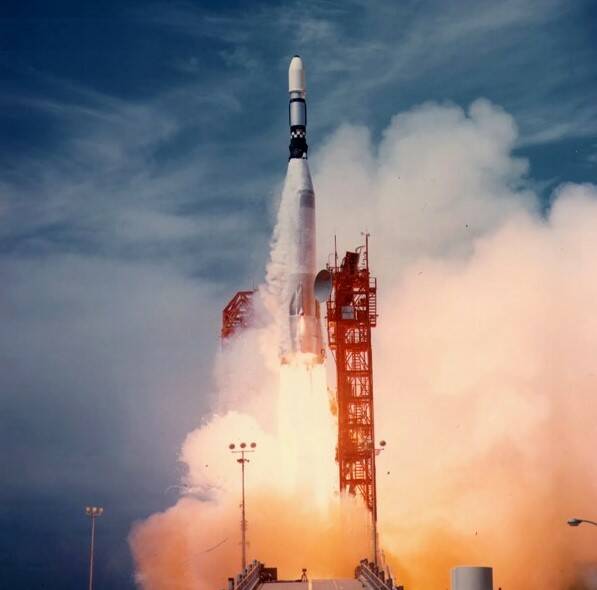
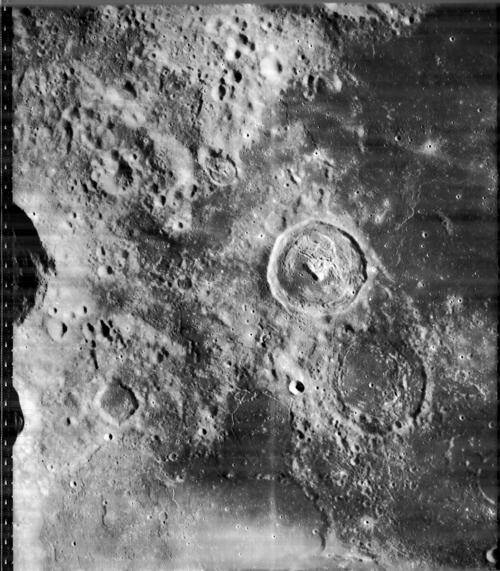
Left: The Soviet Union’s Luna 10 spacecraft, the first to orbit the Moon. Middle: The launch of Lunar Orbiter 1, the first American spacecraft to orbit the Moon and the first to return images of the surface from lunar orbit. Right: The first medium-resolution image taken by Lunar Orbiter 1 showing the Mare Smythii region of the Moon.
While NASA had high hopes that its first Lunar Orbiter would take the title of the first spacecraft to orbit the Moon, a goal the agency had sought since 1958, the Soviet Union’s Luna 10 upstaged the American spacecraft when it arrived in orbit on April 3, 1966, although it did not carry an imaging system. Lunar Orbiter 1 lifted off on Aug. 10, 1966, and four days later entered an elliptical 117-by-1,160-mile orbit around the Moon, becoming the first American spacecraft to do so. Lunar Orbiter 1’s goals included imaging nine primary and seven secondary potential Apollo landing sites on the Moon’s nearside and 11 areas at lower resolution on the far side. On Aug. 15, Lunar Orbiter 1 activated its camera system with the first days used to test the scanning and transmission of several pre-exposed frames of film.
On Aug. 18, the spacecraft took its first photographs, exposing 16 high-resolution and four medium-resolution frames. The medium-resolution photos were of good quality, but the failure of the spacecraft’s motion compensation system caused blurring of the high-resolution images. An issue with the film developing system required the film to be advanced more frequently than planned, resulting in the need to take additional unplanned photographs. A positive outcome of this problem resulted in mission managers deciding that additional photographs could be acquired by temporarily reorienting the spacecraft from its cameras facing downward to pointing them in the direction of flight. On Aug. 23, as Lunar Orbiter 1 emerged from the Moon’s far side, it imaged the Earth as it appeared to rise over the lunar horizon, the first time the home planet was imaged from lunar orbit. The black-and-white Earthrise image was well-received by scientists and the public alike, and the spacecraft repeated the photograph two days later. Two years later, the Apollo 8 astronauts would take the more famous color Earthrise photograph. The oblique or out-of-vertical views of the lunar surface added a new and useful perspective, more fully developed on the later Lunar Orbiter missions.
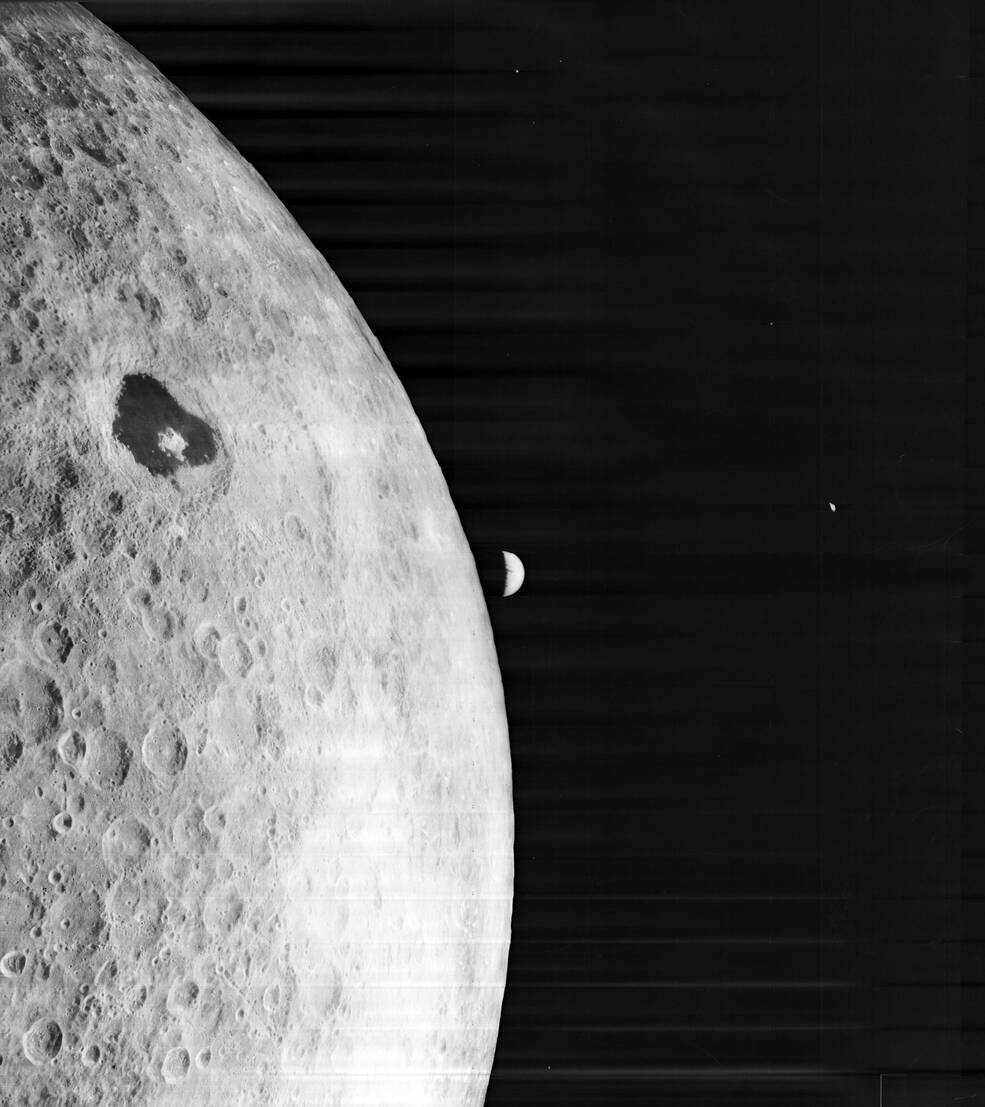

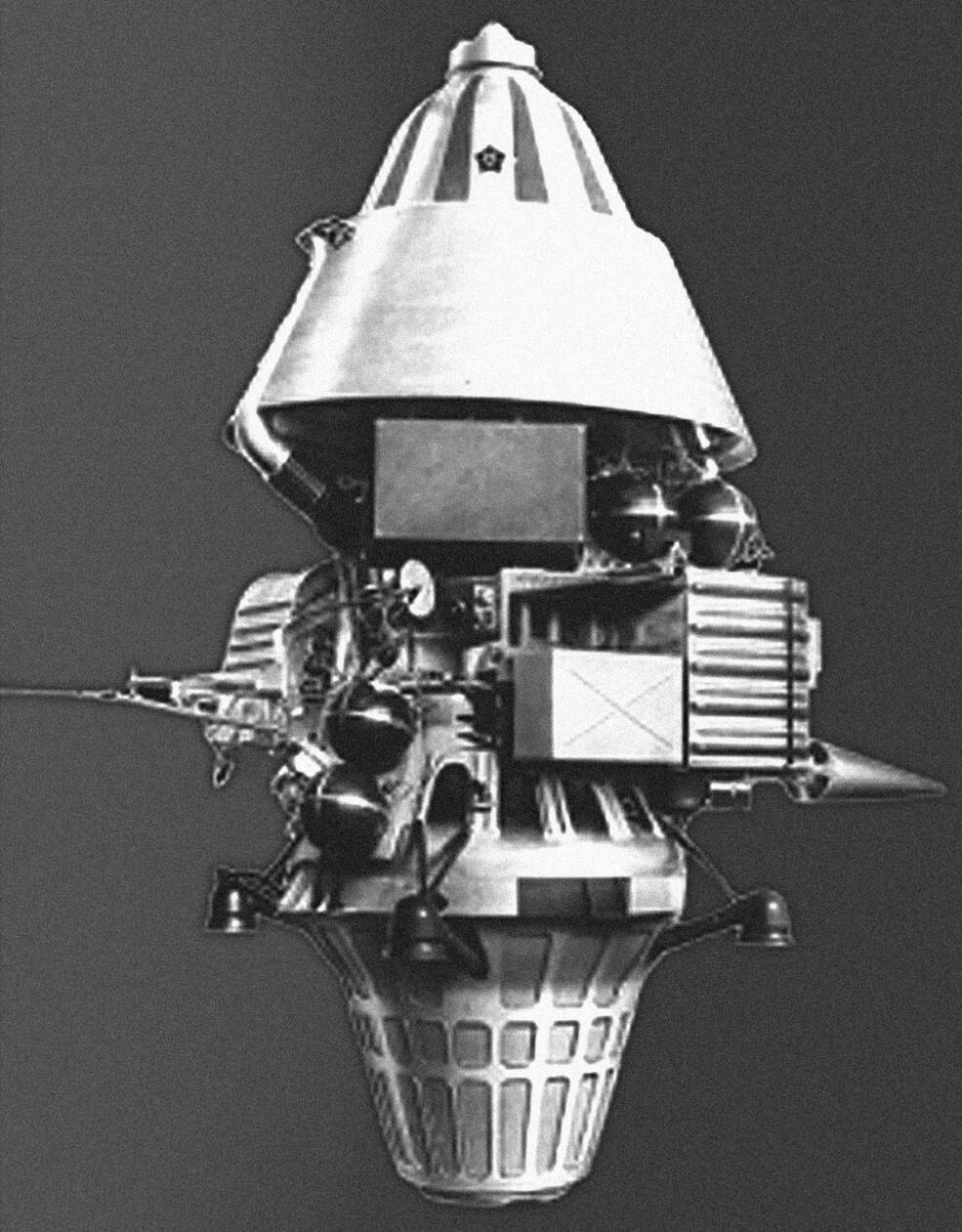
Left: The first image of the Earth taken from lunar orbit, as Lunar Orbiter 1 emerged from the lunar farside. Middle: Closeup of the first image of Earth taken from lunar orbit. Right: The Soviet Union’s Luna 11, 12, and 14 orbiters.
Lunar Orbiter 1 took its last photograph of the Moon on Aug. 28, and transmission of the 205 images continued until Sep. 16. The spacecraft photographed all the planned potential Apollo landing sites, returning the highest resolution images of the Moon’s near and far sides to that time. Its photography mission completed, it continued to return radiation, micrometeoroid, and engineering data, and tracking of its orbit enabled a preliminary understanding of the mascons. On Oct. 29, with the spacecraft’s systems deteriorating and its fuel tanks nearly empty, ground controllers commanded Lunar Orbiter 1 to fire its engine to crash it onto the Moon on its 577th orbit, with the impact occurring on the lunar far side. Deorbiting it prevented interference with future Lunar Orbiter spacecraft. The Soviet Union’s Luna 11 joined Lunar Orbiter 1 in lunar orbit on Aug. 27, and unlike its predecessor, it carried a camera to image the lunar surface. A problem with the spacecraft’s attitude control system prevented the camera from pointing at the surface and Luna 11 returned no images of the Moon, continuing to function until Oct. 1. The nearly identical Luna 12 arrived in lunar orbit on Oct. 25 and three days later began its photography mission. Ground teams kept in contact with Luna 12 until Jan. 19, 1967.
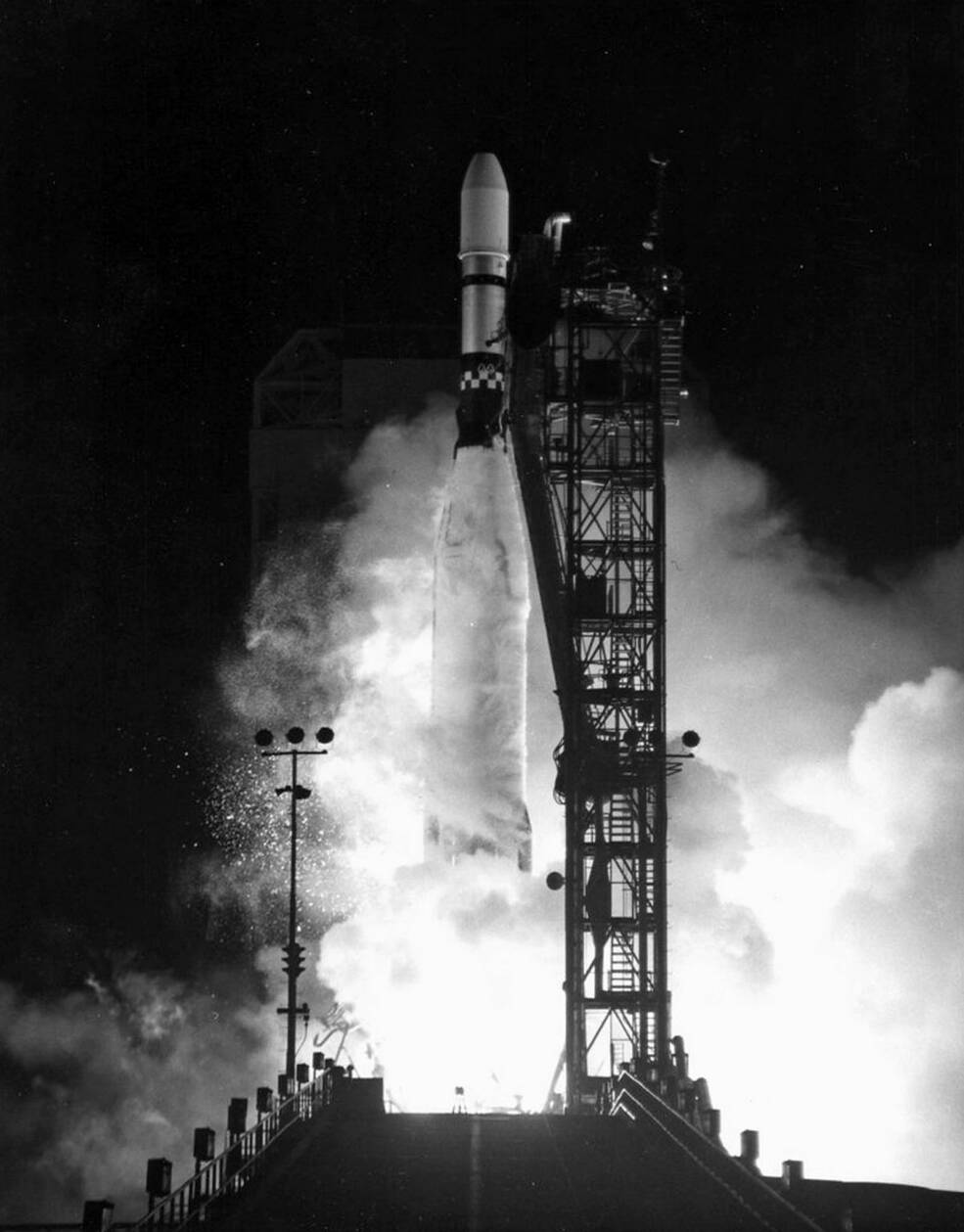
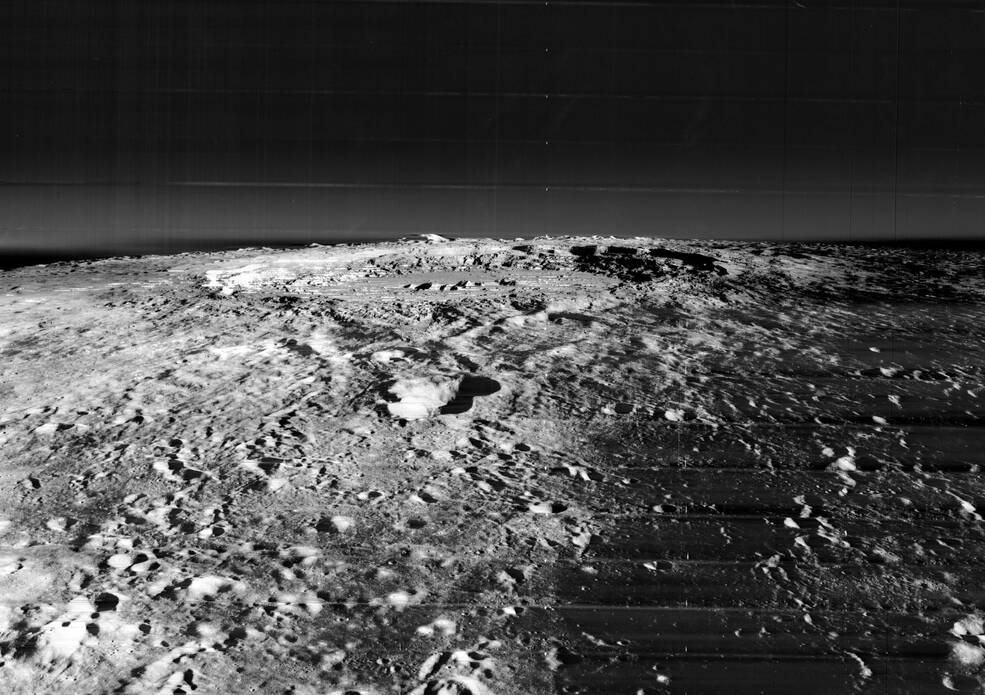
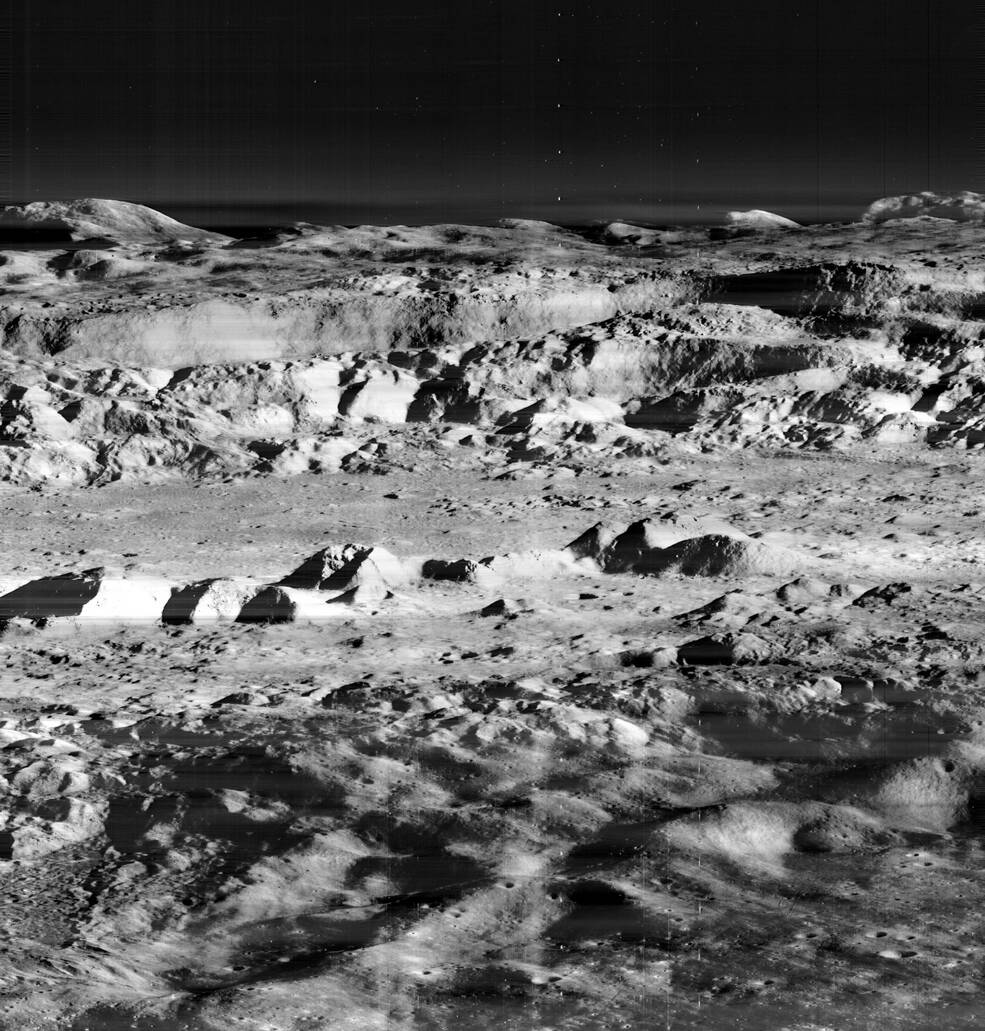
Left: Launch of Lunar Orbiter 2. Middle: Wide-angle view of Copernicus Crater taken by Lunar Orbiter 2. Right: The narrow-angle view of Copernicus that some in the media called the “one of the great pictures of the century.”
Lunar Orbiter 2 lifted off on Nov. 6 and entered lunar orbit four days later, joining Luna 12. It accomplished its primary mission of imaging potential landing sites and, as with its predecessor, ground controllers occasionally oriented it away from its ground track. One of those resulted in what some in the media called the “one of the great pictures of the century,” an oblique view into the 62-mile-wide Copernicus Crater. It also imaged the site where the Ranger 8 probe had intentionally crashed in February 1965. Its imaging mission complete, Lunar Orbiter 2 continued to gather radiation, micrometeoroid, and mascon navigation data until commanded to fire its engine one last time, causing it to crash on the Moon’s far side on Oct. 11, 1967.
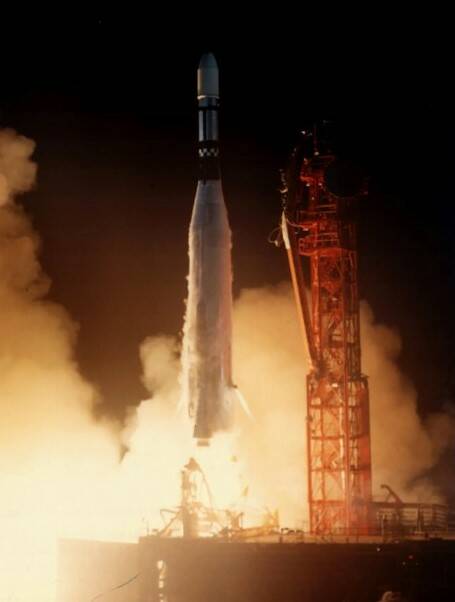
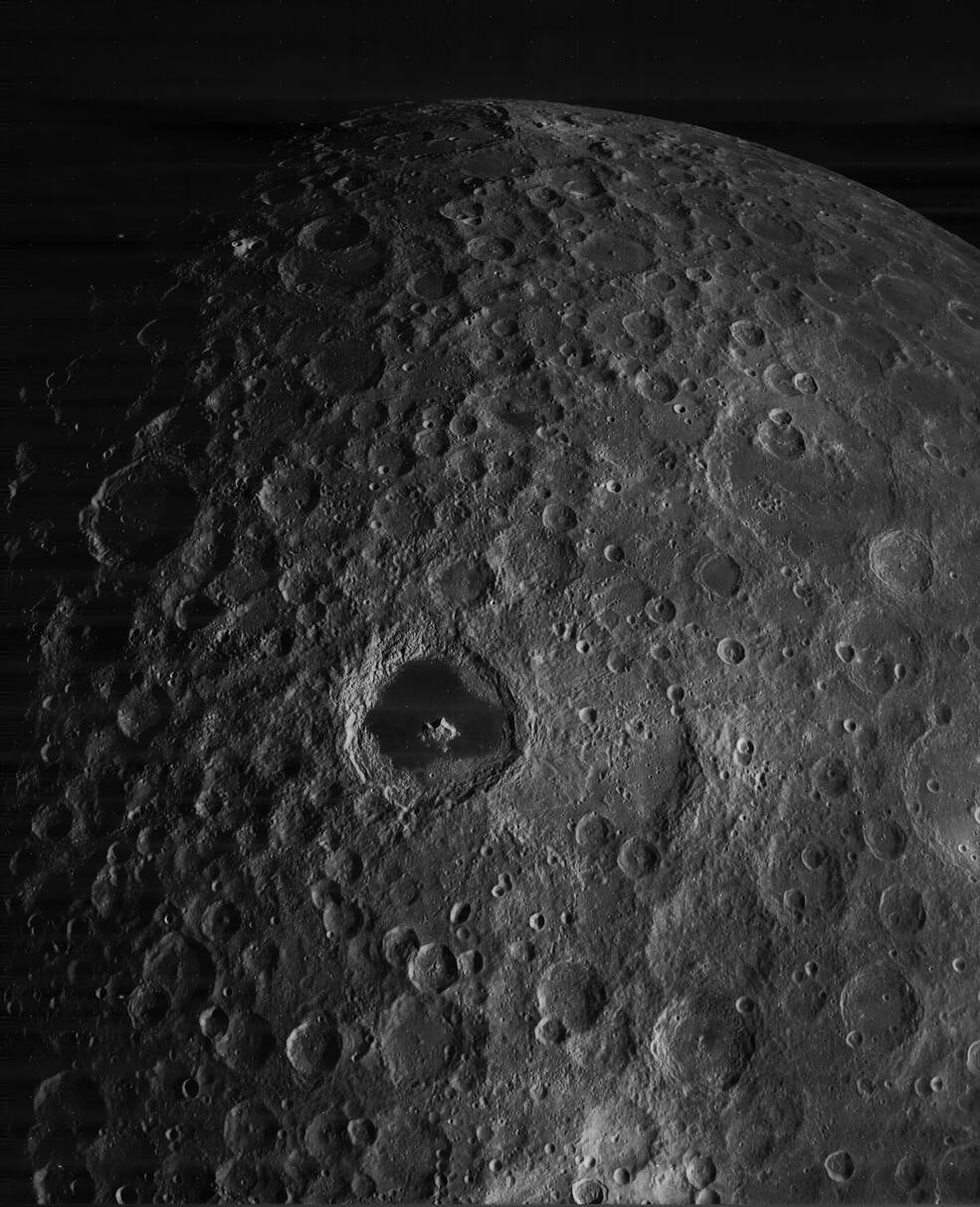
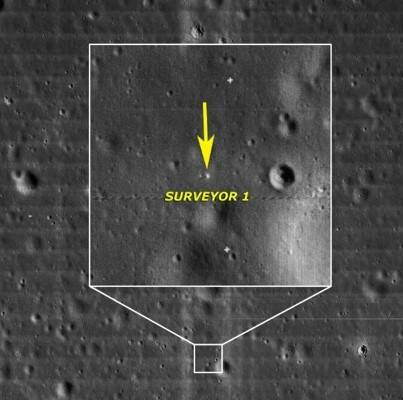
Left: Launch of Lunar Orbiter 3. Middle: Lunar Orbiter 3 image of Tsiolkovsky Crater on the lunar farside. Right: Lunar Orbiter 3 imaged Surveyor 1 on the lunar surface.
The third Lunar Orbiter began its mission on Feb. 4, 1967, and entered lunar orbit four days later. With Lunar Orbiter 2 still operating in orbit, ground teams gained practice in tracking more than one spacecraft in lunar orbit, a critical skill for Apollo. A problem with the film advance mechanism resulted in Lunar Orbiter 3 obtaining only about two thirds of its planned images. One photograph imaged the Surveyor 1 spacecraft on the lunar surface. Lunar Orbiter 3 remained in orbit until Oct. 9, 1967. Based on analysis of the photographs returned by the first three Lunar Orbiter missions, by April 1967 scientists had selected eight preliminary landing sites for the upcoming Apollo missions. One of them, designated Site 2, became the landing site of the Apollo 11 mission on July 20, 1969. Another, Site 7, served as the landing site of the Surveyor 3 mission in April 1967 that Apollo 12 astronauts visited in November 1969.
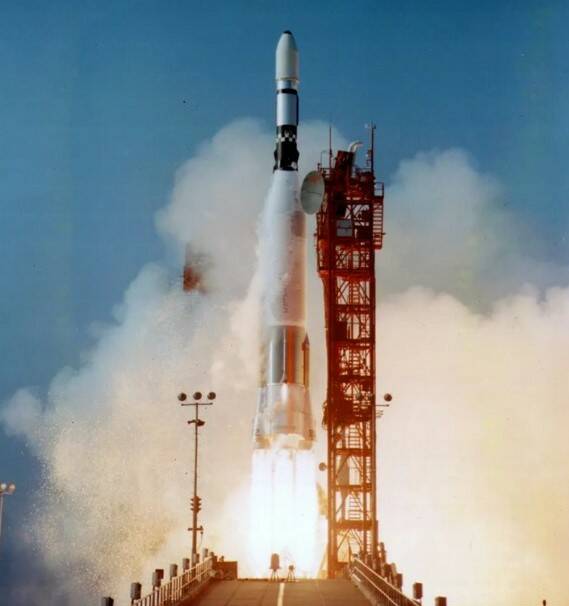
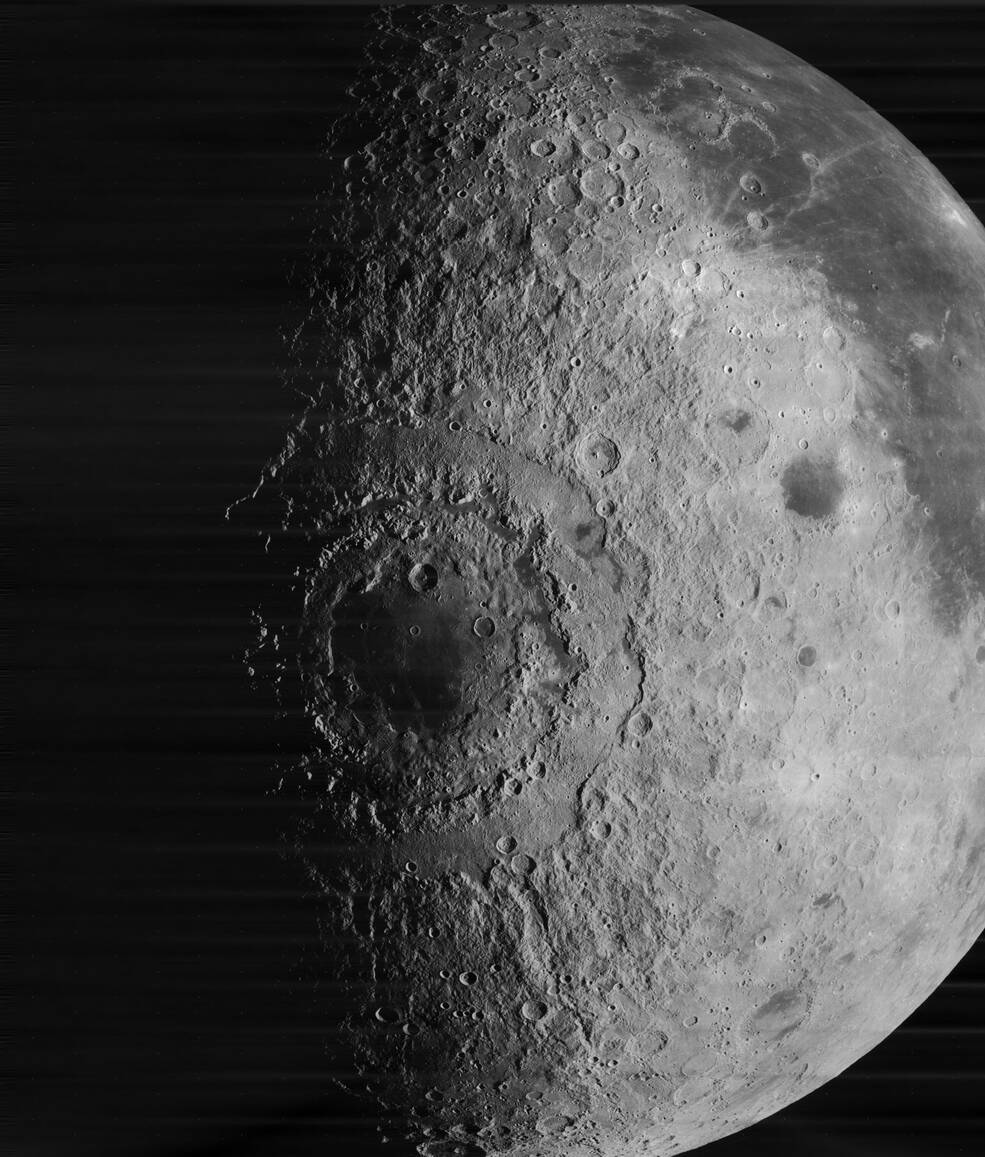

Left: Launch of Lunar Orbiter 4. Middle: Lunar Orbiter 4 medium resolution image of Mare Orientale. Right: Lunar Orbiter 4 image of a crescent Moon and a crescent Earth.
With the objectives of photographing potential landing sites essentially completed by the first three Lunar Orbiters, managers and scientists could pursue other objectives with the final two spacecraft. Among these, mapping the entire Moon had a high priority. Lunar Orbiter 4 lifted off on May 4, 1967, and reached the Moon’s vicinity four days later, joining two other still functioning Lunar Orbiters. Instead of entering an elliptical, low inclination orbit like its predecessors, Lunar Orbiter 4 entered a nearly polar orbit inclined 85 degrees to the equator and at a higher altitude. From this orbit, it imaged 99% of the Moon’s nearside with a resolution of 50 to 100 meters, or an order of magnitude better than Earth-based telescopes, and added to images from earlier spacecraft brought to 80% of the Moon’s far side imaged with a resolution of less than a mile. Controllers lost contact with Lunar Orbiter 4 on July 17, and estimated that it crashed on Oct. 31.
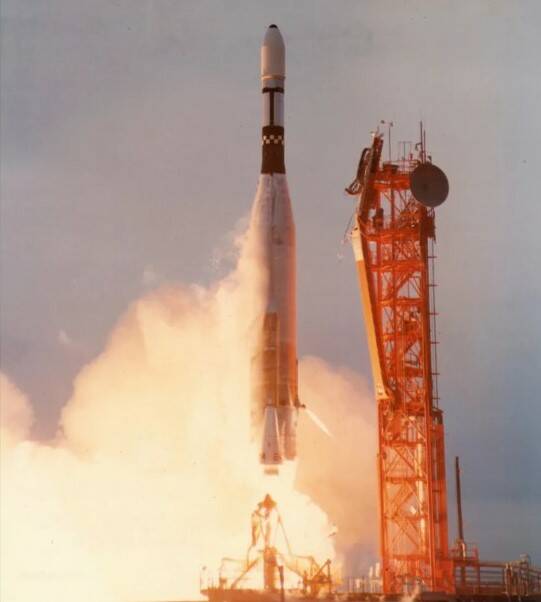
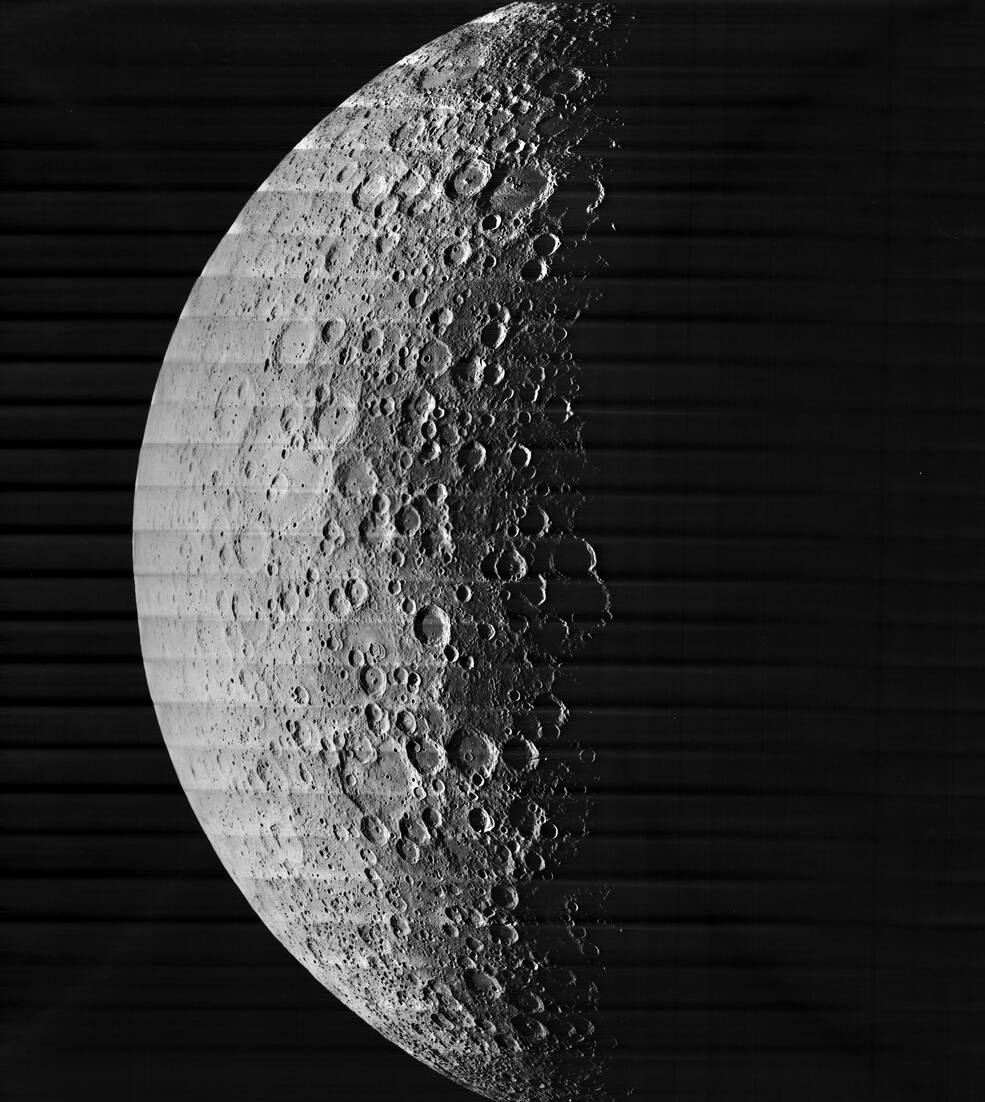
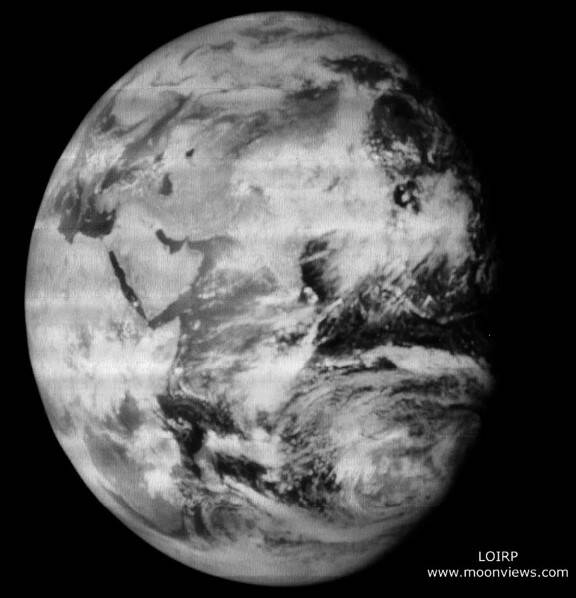
Left: The launch of Lunar Orbiter 5. Middle: Lunar Orbiter 5’s first image, of the lunar farside. Right: High resolution image of the Earth.
It remained for the final spacecraft in the series, Lunar Orbiter 5, to essentially fill in any gaps that its predecessors left and to photograph areas of scientific interest. It lifted off on Aug. 1, 1967, less than a year after Lunar Orbiter 1, and like its immediate predecessor entered a near-polar orbit four days later, joining three of its sister ships still orbiting the Moon. Lunar Orbiter 5 surveyed sites that later mission visited, including Fra Mauro (visited by Apollo 14 in February 1971), Hadley Rille (Apollo 15 in July 1971), Taurus-Littrow (Apollo 17 in December 1972) and the crater Tycho (Surveyor 7 in January 1968). With its 600 mm lens, it captured an image of a nearly full Earth, unlike earlier Lunar Orbiter images that captured a crescent Earth, from 224,823 miles away. Lunar Orbiter 5 fired its engine one last time on Jan. 31, 1968, and crashed on the Moon, bringing to a close a highly successful program that brought American astronauts one step closer to landing on the Moon. The Soviet Union launched Luna 14, their final lunar orbiter of the decade, on April 7, 1968. It entered orbit three days later and operated for a reported 75 days, but did not carry any imaging equipment.

Summary table of the American Lunar Orbiters and Soviet Luna spacecraft and their times in lunar orbit.
In all, the five Lunar Orbiter spacecraft returned 3,062 images of the Moon. Based on these photographs, scientists and mission planners identified several sites that met the criteria for the first lunar landing, such as proximity to the equator, in relatively flat terrain, and with an unobstructed approach path. The Lunar Orbiter imagery formed the basis of all lunar maps for the next quarter century, including the popular one generated in February 1969 by The National Geographic Society. The Lunar Orbiter program gave managers, scientists, and engineers at Langley much needed experience and lessons learned as they tackled another major project in the 1970s – the Viking orbiters and landers to explore Mars. Between 2008 and 2014, the Lunar Orbiter Image Recovery Project (LOIRP) digitized most of the original photographs to enhance their quality and made them accessible at NASA’s Planetary Data System. This article used the enhanced versions of the images from LOIRP.
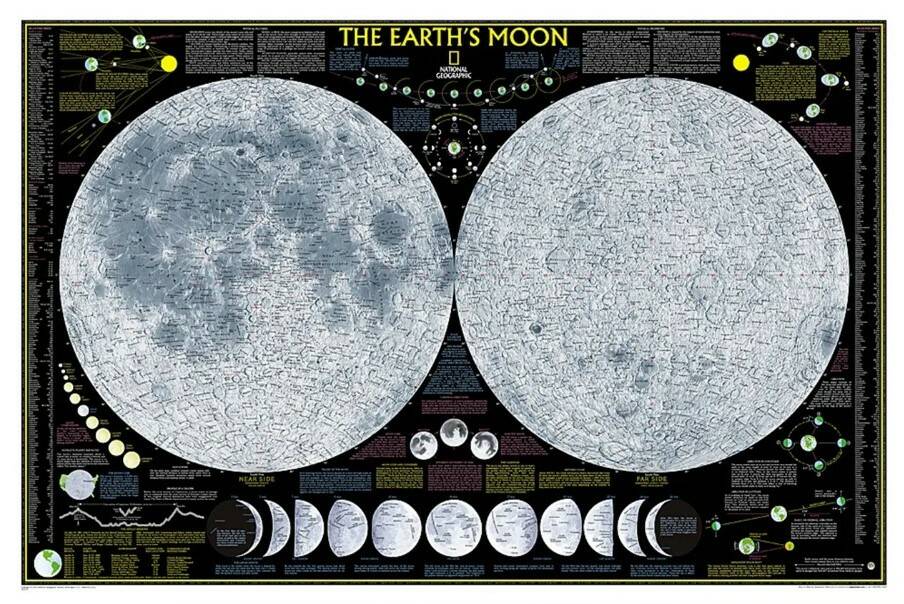
The first comprehensive detailed map of the Moon generated by The National Geographic Society from Lunar Orbiter imagery.Image credit: courtesy National Geographic.

